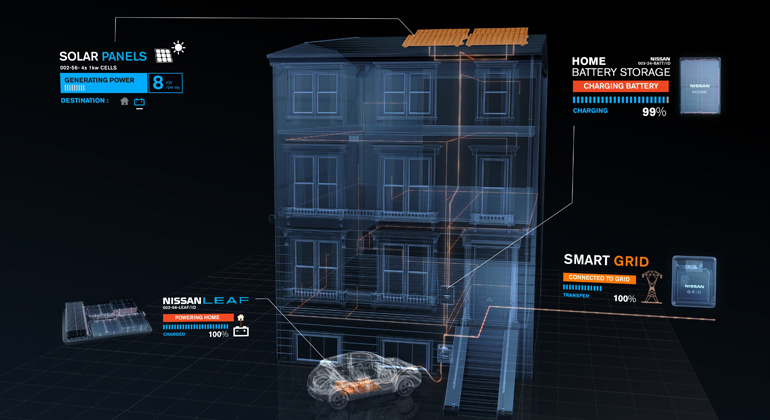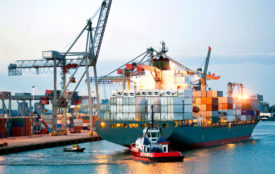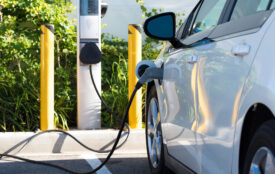What is the Fuel Station of the Future?
Visionary ‘future of mobility concept’ unveiled by Nissan Europe and Foster + Partners.
Electric vehicle expert Nissan collaborates with world-renowned architects Foster + Partners to consider the future of mobility – Concept explores how zero emission technology will influence cutting-edge urban design
Nissan recently revealed an exciting glimpse into the future – with the unveiling of its fully connected vision of the future of mobility in association with renowned architects, Foster + Partners.
The landmark partnership, between the manufacturers of the world’s best-selling 100 percent electric vehicle and the leading design studio, concluded that the fuel station of the future could actually be the car itself.
Illustrated in a stunning two minute video, featuring the best-selling Nissan LEAF and futuristic IDS Concept, Nissan’s visionary concept explores how our way of living might change as technology develops.
The collaboration, which concluded a 12-month partnership, offers a snapshot of what’s to come from Nissan’s vision for Intelligent Mobility; a world in which cars interact with their environment as populations adopt zero emission, Piloted Drive technologies.
The design study was unveiled at this year’s 86th International Motor Show in Geneva.
Paul Willcox, Chairman, Nissan Europe, said: “Technology holds many of the answers for the challenges we face in our cities today. However, the true power comes when those technologies are integrated with each other and the world around us.
“We’ve been at the forefront of zero emission technology since 2010, but our vision does not stop there – we believe that the future of transportation is reliant on both infrastructure and the environment. We’re looking for real, workable solutions that go beyond the product.”
Incorporating a range of pioneering Nissan technologies, the vision hints at how vehicle-to-grid, battery storage, wireless charging, autonomous drive technology and over-the-air connectivity could combine to revolutionise how energy is used and distributed across Europe’s major cities.
David Nelson, Co-Head of Design, Foster + Partners, added: “Integrating zero emission technologies into the built environment is vital in creating smarter, more sustainable cities. That commitment must extend far beyond the car – it must sit at the heart of everything we do.”
The need for a sustainable and innovative refuelling network is becoming vital as the market shifts toward alternative sources like electric power.
Today, more than half (54%) of the world’s population lives in cities and by 2050, seven out of every 10 people will live in urban areas[i], so it is imperative that the infrastructure exists to support this growth.
Nissan is currently trialling an innovative vehicle-to-grid system in Europe which, when coupled with advances in its second-life batteries, will allow drivers to operate as individual ‘energy hubs’ able to store, use or return clean energy to the grid.
It is predicted that by 2050, almost all global energy needs can be met with renewable energy sources[ii].
Nissan is the leader in zero emission technology, and pioneered the commercial electric vehicle market in 2010. The Nissan LEAF – the first mass-market, pure EV launched globally – continues to be the best-selling EV in history.
For more information about Nissan products, services and the brand’s commitment to sustainable mobility, visit www.nissan.eu/experience-nissan.html








